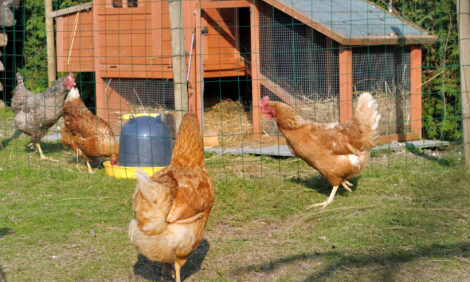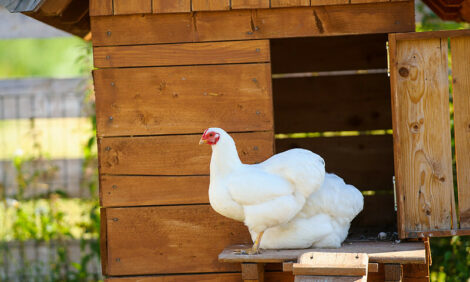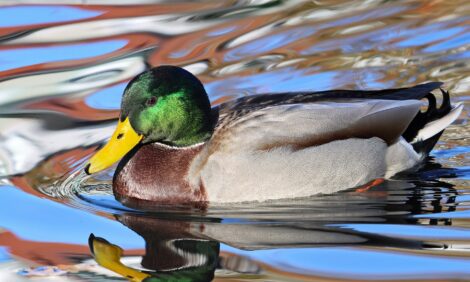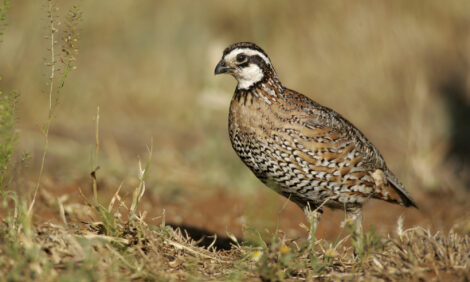



US Poultry Industry Manual - production cycles of egg-type chickens
Learn more about housing, lighting and egg collectionPart of Series:
< Previous Article in Series Next Article in Series >
Editor's Note: The following content is an excerpt from Poultry Industry Manual: The Foreign Animal Disease Preparedness and Response Plan (FAD PReP)/National Animal Health Emergency Management System (NAHEMS) Guidelines which is designed to provide a framework for dealing with an animal health emergency in the United States. Additional content from the manual will be provided as an article series.
Large commercial egg operations require coordination between the hatchery, pullet growing farms, egg packing plant, and feed mill. Pullets needed to replace spent hens represent the second largest cost of egg production. In a typical production system, companies purchase day-old pullets from hatcheries that are owned and operated by genetics companies with direct sales to egg producers. Pullets are raised in wire cages in brooder/grow-out buildings on rearing farms owned by the production company or by a contract pullet grower. The size and number of rearing houses required depends upon the size and number of layer houses being supplied with replacement pullets and the number of egg production cycles in the laying house.
A single rearing house can supply 3 layer houses in a single cycle (no molt) system, 5 layer houses in a two-cycle (one molt) system, and 7 layer houses in a three-cycle (2 molt) system. Day-old chicks are initially placed in cages on one or two tiers, but around 4 weeks of age the flock is subdivided and chicks are moved into cages on the remaining one or two tiers. At 16-17 weeks of age, pullets are transferred to cages in a laying house where they will stay for the remainder of their productive life. Moving at this age provides adequate time for pullets to recover from the stress of moving.
Light stimulation to encourage onset of egg production should not begin until one week after pullets have entered the laying house. Egg production begins around 18-19 weeks of age. The length of the productive life of a laying hen depends upon the number of egg production cycles utilized on the egg farm. Typically, the productive life of laying hens ends at 78-80 weeks in a one-cycle system, at 102-106 weeks in a two-cycle system, and at 140 -150 weeks in a three-cycle system. Approximately 80% of laying hens in the USA are molted at least once. Annual egg production per hen has risen from 213 in 1962 to 281 in 2009.
Replacement Pullets - Brooder House
Brooder houses should be cleaned and disinfected at least 2 weeks prior to arrival of chicks. Effectiveness of this process should be documented by visual inspection and by environmental cultures to detect E. coli and Salmonella. Heavy, water-proof paper placed on the floor of wire cages allows chicks to walk without falling through spaces between wires, helps to control temperature and reduce drafts, and permits feeding off the paper. Day-old chicks cannot regulate their body temperature, so it is critical to provide proper environmental temperatures (92-95 F).
Humidity during the first week should be at least 50% to prevent dehydration. Access to water from cup or nipple drinkers is facilitated by lowering water pressure so that a hanging drop of water is visible to the chicks. Feed should be placed on cage papers in front of trough feeders which should be completely filled with starter feed before chicks are placed in the cage. It is very important that pullets destined for alternative housing systems be raised in the same system. Pullets must know how to move about the system and how to find feed and water when placed in the laying house.
Physiological Development of Pullets
It is critical that pullets have the correct body weight and correct body composition at the onset of lay so egg production and shell quality can be sustained during the production period. Laying hens that are too small lack the calcium and protein reserves necessary to sustain egg production. During the first 6 weeks of life, the digestive tract and immune system develop. From 6 to 12 weeks of age, the skeleton achieves 95% of its adult size and muscle is formed. Between 12 and 18 weeks of age, the reproductive tract develops. Egg production generally begins between 19 and 21 weeks of age depending on body weight and the lighting program. Low body weights and stress can delay the onset of egg production.
Flock Uniformity
Beginning at 4 weeks of age, 100 pullets should be weighed each week to monitor average body weights and uniformity. Uniformity is represented by the percentage of pullets within 10% of the average body weight of individuals within the flock. Uniformity at 16 weeks of age is an important indicator of pullet flock quality. Growout programs strive to attain 85-90% body weight uniformity. Changes in feed formulations (starter to grower to developer) should be based upon achieving target body weights.
Lighting
The intensity and duration of light during brooding and grow-out directly impacts growth and onset of sexual maturity. Day length can be used to prevent or delay onset of egg production in underweight pullets or to encourage early onset of egg production. Most brooder/growout houses are light-proof and all light exposure comes from electric light bulbs. Typically, pullets are exposed to 20-22 hours of light with an intensity of 30 lux during their first week of life. During the second week, the number of hours of light is reduced to 20 and the intensity is reduced to 5 lux. Subsequently, the number of hours of light per day is slowly reduced to 10-12 hours by 9 to 10 weeks of age.
Typical lighting programs provide a constant 10-12 hour day length until 18 weeks of age. If optimum average pullet weights are attained, light stimulation begins at 17-18 weeks with initial weekly increases in day length of 30 minutes followed by adding an additional 15 minutes of light each week until 16 hours of light per day is attained. If maximum egg size is desired, reducing day length by 15 minutes per week between 10 and 15 weeks and delaying light stimulation until 19 or 20 weeks of age will delay sexual maturity until pullets have heavier body weights resulting in larger eggs, fewer cloacal prolapses, and fewer eggs over the production cycle.
To promote greater feed consumption, the light period can be reduced more slowly to provide more feeding time. To maximize egg numbers, chickens can be exposed to early light stimulation at 15-16 weeks of age which results in egg production 7-10 days earlier than normal and smaller eggs during the production cycle.
Laying Hens

Feed and Water
Water pipes and feed troughs extend the length of the cage rows and provide feed and water to chickens in each cage. One or two nipple or cup drinkers in the rear or upper part of each cage are attached to a water pipe. Feed troughs pass along the front of each cage and feed is mechanically moved along the trough by a chain or auger system. Feed troughs are filled automatically and are regulated by a time clock.
Egg Collection
Sloped wire mesh floors extend outside of the cages and allow eggs to roll beneath the feed trough onto an egg conveyor belt which extends the length of the cage rows and transports eggs out of the laying house to the processing facility.
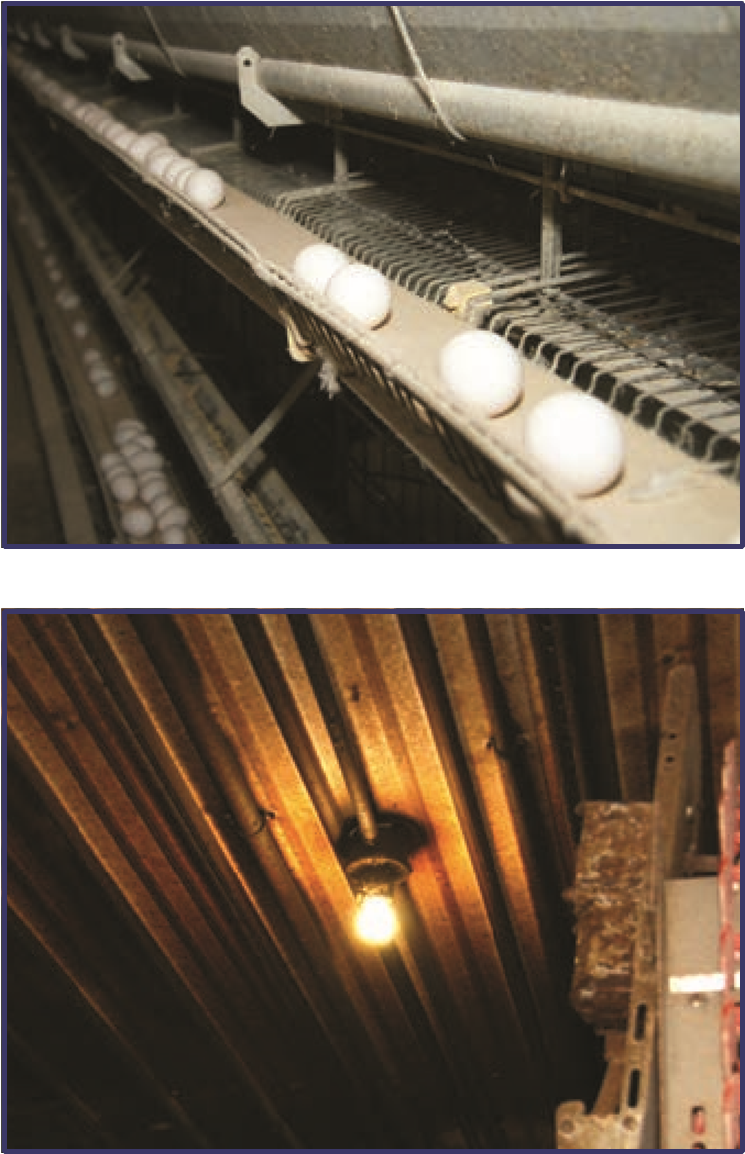
Light
Most light programs for laying hens during egg production consist of 16 hours of light with 10 to 30 lux at bird level and 8 hours of darkness. If light intensity is not sufficient, egg production is impaired. If light intensity is too great, cannibalism, cloacal prolapse, and nervousness may increase. Dirty light bulbs reduce light intensity and need to be cleaned and burnt out light bulbs should be promptly replaced.
House Temperature
Automated, computer-controlled environments maintain proper temperature, light, and humidity. Optimum environmental temperatures range from 57 to 79°F. Temperatures outside this range adversely affect feed conversion, egg production, egg quality, and water consumption. Controlled ventilation and insulation are necessary to maintain proper temperatures and humidity.
Mortality
Normal mortality ranges from 0.05%/week in young to mid-age layers, and on up to 0.18%/week in older age flocks. In addition to age, normal mortality can be influenced by bird strain, management, and housing style. Depending primarily on age, a mortality rate of 0.15-0.20%/week is a threshold signal for producers to take “diagnostic action” in young to mid-age laying hens.
Reference: "USDA APHIS | FAD Prep Industry Manuals". Aphis.Usda.Gov. 2013. https://www.aphis.usda.gov/aph...
The manual was produced by the Center for Food Security and Public Health, Iowa State University of Science and Technology, College of Veterinary Medicine, in collaboration with the USDA Animal and Plant Health Inspection Service through a cooperative agreement.










